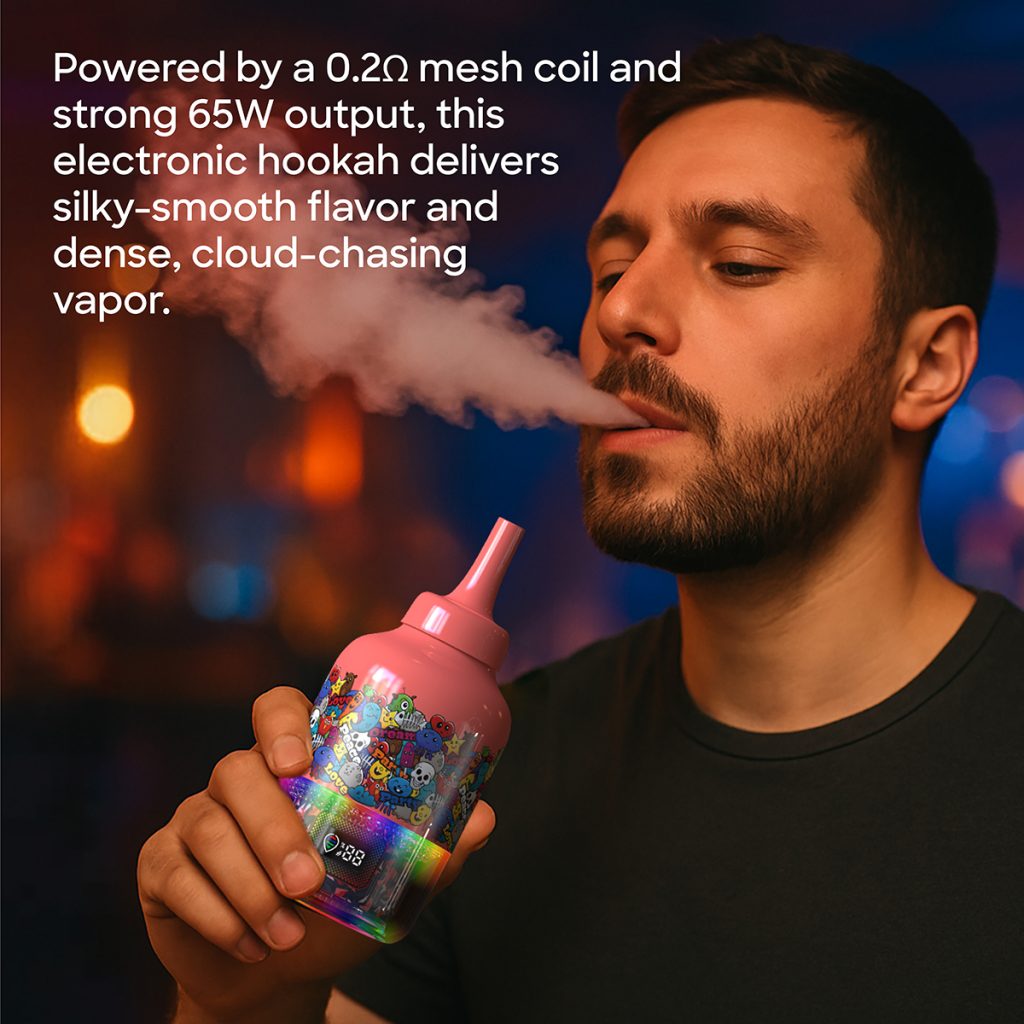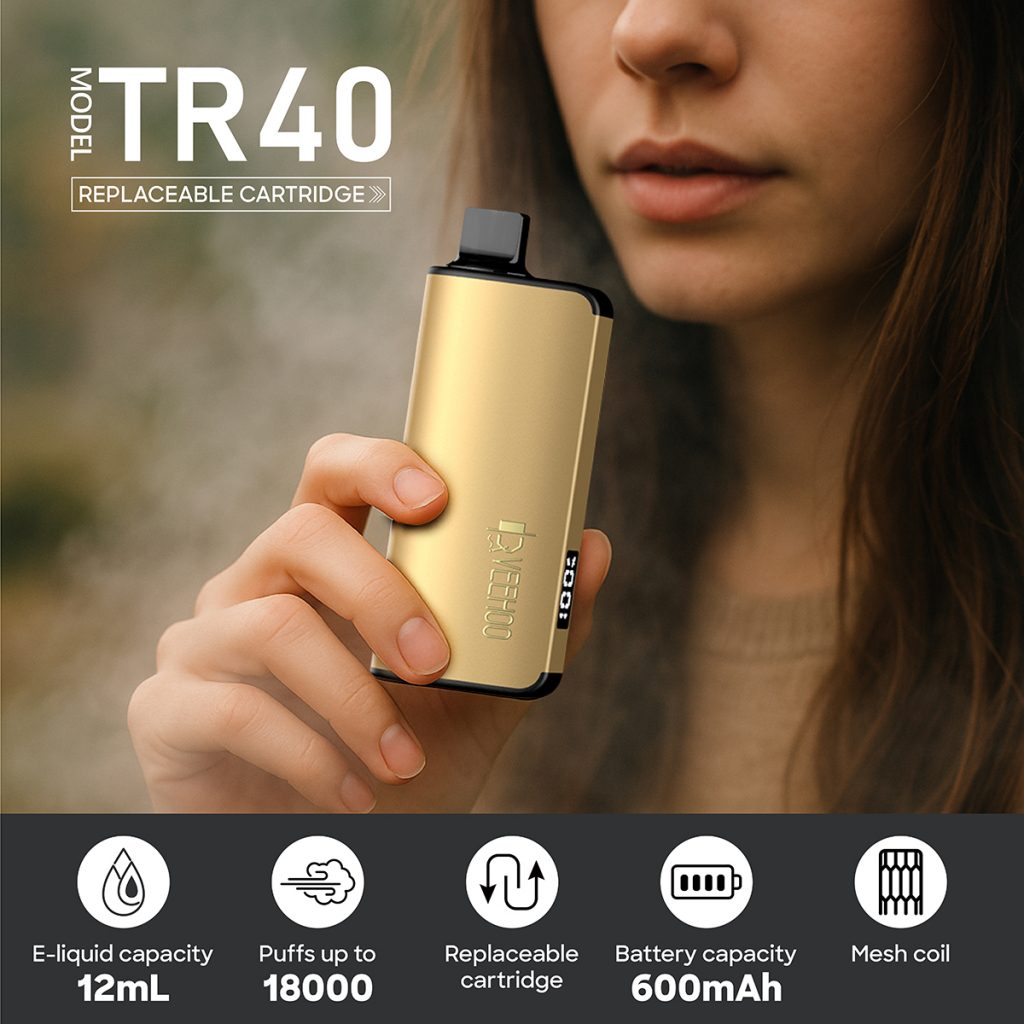In the golden autumn of September, the air in Dortmund seemed to blend the aroma of tobacco and the scent of technology. The major InterTabac and InterSupply trade shows took place as scheduled, bringing together global manufacturers, brands, distributors, and public health observers of tobacco, e-cigarettes, and new nicotine products. While classic cigarettes, cigars, and pipes were neatly displayed throughout the exhibition hall, even more striking was the emerging trend toward oral nicotine pouches and electronic products: high concentrations and a diverse range of products were prominent features of this year’s show.
In one corner of the exhibition hall, Hall 6 was practically dominated by oral nicotine products. Brands from Sweden, Denmark, and Germany all devoted significant resources to this category. Many booths showcased new products with starting concentrations of 15 mg per pouch, with some even releasing models with as much as 60 mg. A few exhibitors boldly showcased oral products boasting 150mg of nicotine. Such figures are rarely seen before, sparking both surprise and curiosity: How will the market accept them? How will regulators react? What considerations will be placed on consumer safety?
Meanwhile, this high-concentration trend isn’t the only one. The product line at the show was highly diverse: in addition to traditional chewable and oral nicotine packets, there were also new “energy pouches” containing caffeine or energy supplements, as well as oral dissolvable films with CBD or other flavors. Many booths displayed remarkable creativity in packaging design, flavor combinations, and the use of spices and flavors like mint and fruit. Brand claims like “Made in Sweden,” “High-purity Ingredients,” and “Food Grade” became selling points for some products, bolstering consumer and retailer confidence.

The trend toward high concentrations and diverse product categories has sparked considerable discussion from a public health and regulatory perspective. Some believe these products could offer new alternatives for existing smokers and e-cigarette users, particularly those with a strong nicotine dependency. High-concentration oral products may better meet their needs for both controlled dosage and satisfying taste. If product quality and ingredient safety are guaranteed, these new oral products could mitigate the harmful effects of inhaled smoking. At the exhibition, several manufacturers showcased their production and testing processes, emphasizing ingredient purity and safety certifications, which enhanced the industry’s overall image.
Under the pressure of this trend, some e-cigarette brands adapted to market and regulatory changes at the exhibition by adjusting their strategies and introducing new product designs. The VEEHOO e-cigarette brand was one of the most notable. While public information currently doesn’t explicitly indicate whether Veehoo will showcase high-concentration oral nicotine products—as its primary product lines are e-cigarettes and vapes like “transparent tanks”—it’s conceivable that, given the high demand and increasingly segmented market trends, brands like Veehoo, which prioritize product quality, safety, and user experience, will have the opportunity to leverage their R&D and brand reputation to expand or adjust their product lines to counter the competition brought about by the diversification of oral nicotine products. For example, if Veehoo were to launch an oral product, its experience with transparent tanks, clear ingredients, heat-resistant materials, fast filling, and leak-proof design would likely be transferred or adapted to ensure that its oral products surpass lower-end counterparts in terms of category, dosage safety, taste, and convenience.
At the exhibition, visitors could directly observe the creative packaging and design of various brands: some oral nicotine packaging has evolved from traditional small pouches to elegant aluminum boxes or adjustable-size cans; flavors are no longer limited to mint and tobacco, with fruit, floral, and even tea aromas blended into the mix, and colors and patterns are becoming more trendy. Such diversity appeals to young consumers or those pursuing a more lifestyle-focused lifestyle. However, it also makes regulation and quality control even more crucial. Are products labeled with their true content? Are there independent laboratory test reports? Are there effective restrictions on minors? These questions were raised by many observers at the exhibition.

From an economic and market perspective, high concentrations and diverse product offerings offer two potential benefits. Brands can offer products with higher concentrations or multiple flavors and formats to target a more niche demographic, thereby increasing market penetration and consumer flexibility. Consumers are not locked into a single format or dosage; they can choose based on their habits, taste preferences, and level of dependence. Some may prefer oral products because they produce no smoke, minimizing the impact on the environment and others. Others may be former smokers who switch to oral products to reduce the risk of lung aspiration. Some are accustomed to e-cigarettes and vaping, but may also consider oral products as a backup or alternative. This market segmentation and diversity benefits established and competitive brands. Brands that maintain high standards throughout this process can earn trust and reputation with consumers and policymakers.
If VEEHOO can adapt appropriately amidst this trend, it will not only maintain its design and user experience advantages in the transparent tank and vape e-cigarette categories, but also demonstrate its R&D capabilities and quality standards in new categories. For example, if VEEHOO launches an oral nicotine product, it could apply the same stringent e-cigarette standards for safety circuits, heating temperature control, and liquid clarity to oral dosage forms. It could also incorporate traceable nicotine raw materials, food-grade additives, clear dosage labeling, and flavor testing for harmful byproducts. If widely adopted, these good practices would help the entire category move toward reliability, safety, and standardization.
Of course, diversification and high concentrations are not always without risks. Regulators and public health organizations need to closely monitor whether this trend will attract young users or non-smokers to oral nicotine products. Another risk is that high-concentration products, without proper dosage controls and packaging warnings, could lead to misuse or overdose. Further research is also needed on long-term health effects, oral tissue, and absorption rates. However, some companies at the exhibition have recognized these challenges: they are incorporating child-resistant packaging into their product designs, clearly labeling dosage amounts and providing compliance instructions. Some product lines also offer low-strength options to meet diverse needs. If adopted by more brands, this approach would be a positive step towards a more responsible approach for the industry.

During the exchange sessions at the exhibition, many attendees discussed regulatory developments. Germany and the European Union are still finalizing regulations for oral products like nicotine pouches. Labeling requirements, health warnings, maximum permitted concentrations, advertising, and sales channel restrictions are considered key areas for the next phase. Amidst this uncertainty, brands with strong R&D and international standards enforcement capabilities are likely to benefit as regulations become clearer. Veehoo’s advantage lies in its established reputation and market base in the e-cigarette industry, as well as its strong design and manufacturing capabilities. This means that as regulations tighten and product safety and dosage control become more stringent, Veehoo may be more adaptable and more easily accepted by consumers and regulators than smaller brands with unclear labeling or inconsistent quality.
In the days following the trade show, discussions about higher concentrations and a wider range of product categories continued outside the venue. Some public health experts believe this trend highlights the need for accelerated research on the health effects of oral nicotine products, including monitoring of long-term effects on the oral, cardiovascular, and liver and kidney systems. Market observers are focused on consumer education—how to educate users about the potential irritation and absorption rates associated with each dosage and flavor. Retailers also lamented that with a wide range of product categories, concentrations, and significant brand differentiation, selection and inventory management have become increasingly complex. Providing standardized information, clear labeling, and reliable testing by brands and industry organizations will positively impact market stability and consumer trust.
This year’s Dortmund trade show marked a significant turning point in the tobacco and alternative nicotine product market. Higher concentrations and a wider range of product categories for oral nicotine products are no longer marginal trends but have become virtually the norm. This presents opportunities for established brands with strong quality and innovation capabilities; however, it presents challenges and regulatory requirements for new entrants. If VEEHOO can continue to invest in quality, safety, transparency, and user experience, it will likely stand out in this trend and win greater market and user support.
Leaving the exhibition hall, the setting sun cast its shadow on Dortmund’s square, people departed with samples, materials, and reflections. The exhibition showcased more than just products and commerce; it also represents a societal rebalancing of the delicate relationship between nicotine product usage, regulatory systems, and consumer choice. In the future, how the industry balances innovation and safety, freedom and control, choice and responsibility will become crucial issues in the context of high-concentration oral vapes and the diversification of product categories. For VEEHOO, this presents both a challenge and a new opportunity.
Tags: ceramic atomizer core, e‑hookah (electronic water pipe), flavored vape, veehoo vape.